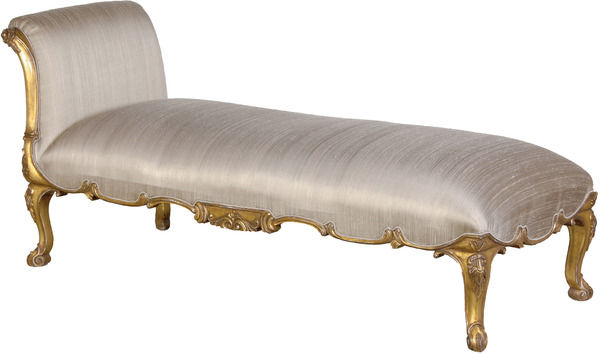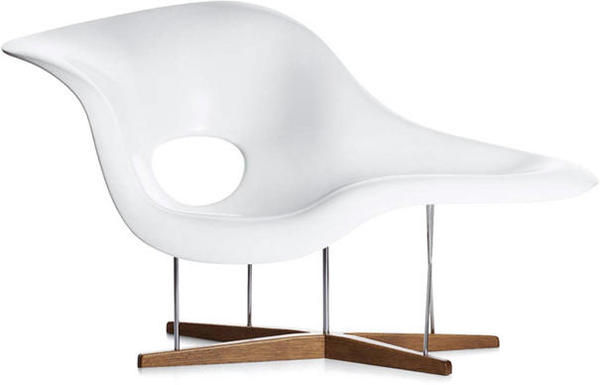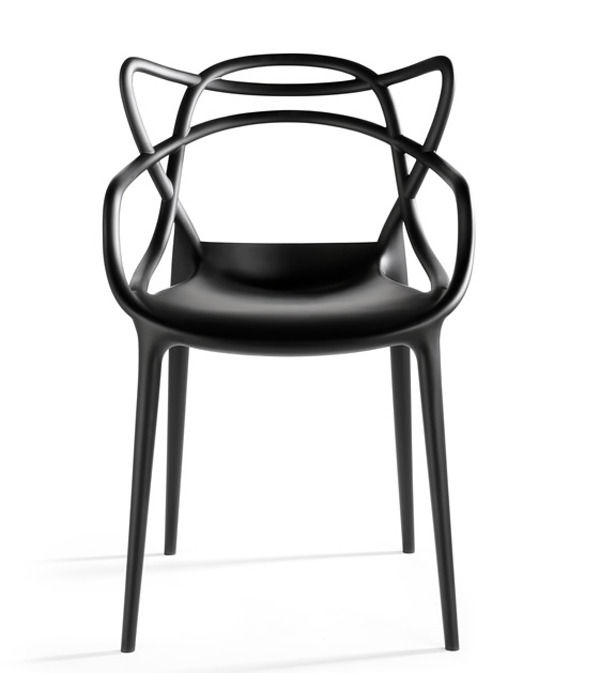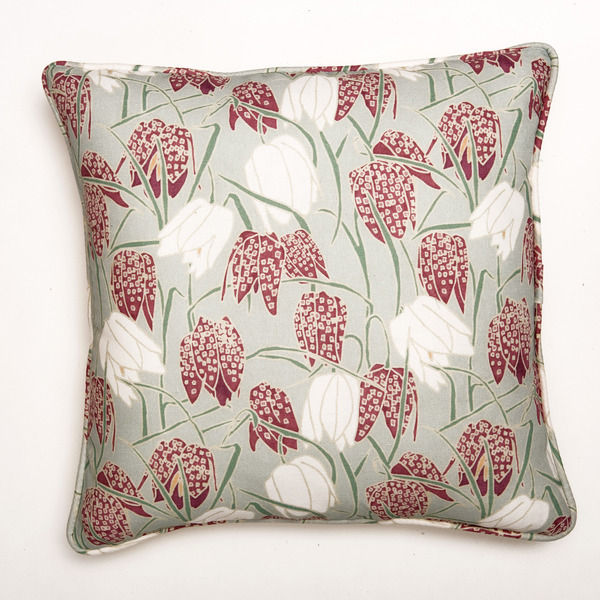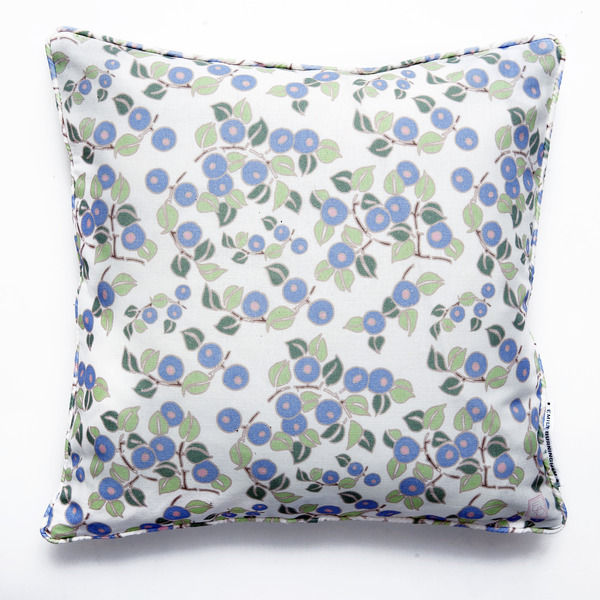Features: November '10
A century of chairs
We uncover the design history of the chair and its transformation through the last 100 years
We look at some of the most iconic chairs of the last 100 years and consider how aesthetics as well as comfort have played a large role in the design process.
In Ancient Egypt, chairs were of great richness and magnificence, and they were made from ebony and ivory, or of carved and gilded wood. Nobility and royalty were allowed to enjoy the comfort and grandeur of the chair whilst the rest of society were used to sitting on stools. It wasn’t until the Eighteenth century that we saw the golden age of the chair throughout England and France; it was no longer a privilege of state, instead the furniture piece became a standard item for anyone who could afford it.
Early in the twentieth century, there was a period of continued experimentation in chair design which brought a fresh, modernist approach to the way we think about the world around us, particularly domestic objects. However, amongst the need for geometric, ordered shapes, there was still the desire for comfort to be achieved through design. In 1928 the ‘chaise longue’, the precursor of the sofa was developed, and it adopted the French name which means ‘long chair’. Charlotte Perriand (1903-1999) came up with the design when she was asked to design a series of chairs to furnish Maison La Rouche. The chaise longue is indulgent of eighteenth century Rococo, with beautifully delicate cabriole legs and traditional gilt finished carved frames. This furniture piece was the first of its kind, but it’s still widely popular today and can effortlessly give a boudoir a glamorous and sophisticated feel.
The Modernist approach to thinking changed the concept of design, and saw intricate and delicate detailed carvings in furniture being replaced with simplicity and order reflected in geometric forms and smooth lines. In the 1930’s, despite the economic crisis, there was significant progression in the design of the chair with designers such as Alvar Aalto in Finland, moving away from metal and experimenting with different types of wood. Aalto’s stool 60, designed in 1933, is defined by its striped pattern on the profile of the legs, which is veneer inserted into a solid piece of beech in order for it to bend. Aalto achieved one of the goals of modern furniture design which allowed for the mass production of furniture.
Aalto’s innovative work inspired American designers Charles and Ray Eames, who were at the forefront of design in the 1940’s. Charles and Ray Eames designed La Chaise in 1948 for a competition at the Museum of Modern Art in New York. Their inspiration came from the “Floating Figure”, a sculpture by Gaston Lachaise. The French sculptor’s appreciation of the female form was reinterpreted by the Eames’s who captured the aesthetic beauty in shapes and forms in life all around us. Not only is this chair aesthetically pleasing from all angles, it also enables any number of sitting and reclining positions which is very appealing.
The characteristic silhouette of the Egg chair (1958) has contributed to its popularity as a design classic; it combines modernist ideals with the Nordic love of naturalism. This piece was one of Arne Jacobsen’s three famous chairs of the 1950’s; the others include the Ant chair (1952) and the Swan chair (1957). It was originally created for the SAS Royal Hotel in Copenhagen where Jacobsen took on the project of designing everything from the building itself right down to the taps. The comfort and stylish sophistication of this chair makes it a perfect addition to any modern living space or office.
Whilst the Pop art movement was taking the art world by storm, Vernon Panter’s designs combined the fluid and futuristic style of the 1960’s which introduced the Pop aesthetic to interiors. A revolutionary piece, the Panton chair (1968) was the first cantilevered chair made from a single piece of plastic. Painted with a gloss lacquer, the Panton Chair Classic has a sleek, futuristic look, and its organic ‘s’ shape has been widely used since this design was unveiled.
In the eighties, Philippe Starck emerged as one of the world’s most famous furniture designers. The Masters chair sees Starck pay tribute to three icons of contemporary design- the Series 7 chair by Arne Jacobsen, the Tulip chair by Eero Saarinen and Charles Eames’ Eiffel chair. If you love classic twentieth century designs then this would be the perfect addition to your home. This is definitely one to look out for in the future as a classic design in its own right.
Orla Kiely Storage jars from Bloomsbury
Keep your kitchen organised and colourful with these storage jars by Orla Kiely from Bloomsbury. From £18.95
I've been on the hunt for some new storage jars for my kitchen for what seems like an age.
Turns out I am a extremely fussy person and haven't been able to decide on a simple thing such as kitchen caddies - well, until now that is because I have fallen for these Orla Kiely storage jars from Bloomsbury.
Available in various sizes, the jars come in a range of pattern-queen Orla's signature prints, each one as gorgeous as the next.
And as well as safely storing your tea, coffee and other essentials, these pretty jars will add a touch of retro colour to brighten up even the dullest of kitchens.
Interview: Emily Burningham
We interview British textile designer Emily Burningham
British textile designer, Emily Burningham, has a beautiful collection of versatile fabrics inspired by the patterns and colours in nature. We caught up with Emily to find out what inspires her and what new projects she has on the horizon...
If you had 3 words to describe your style what would they be?
Balanced, stylized, English.
Where does your inspiration come from?
Japan, with its fascinating culture and history has a strong influence on my designs. The boldness, simplicity and use of colour in Japanese textiles have inspired a great deal of my work. Design of the 1920’s and 1930’s is perhaps the other greatest resource for my patterns. English and French textiles from the turn of the century, ceramics, furniture and design of the Arts and Crafts movement have inspired designs such as Poppies and Trees in Pots amongst others. Also, the traditional flowers of an English Garden in summer with an abundance of Hollyhocks, Roses, Delphiniums, Lupins and Foxgloves and an array of visiting insects is a happy, comforting place for me to be.
How have your travels inspired your designs?
Visiting other countries where colour in design is used boldly particularly in traditional regional clothing when enhanced by the light and hot climate is a huge inspiration in contrast to the often subtle, muted tones of England. Saris from India spring to mind.
How important are colour and pattern to your designs?
Colour and pattern are the core of my work and often the most difficult aspect to work with. It’s so easy to get it wrong! One also has to remember that people have to live with the designs and never tire of the pattern.
How do you think pattern and print will continue to keep interior design fresh and exciting?
Pattern, colour and trends are always changing, with many different influences such as a countries political, social and economic circumstance. These changes reflect in all areas of design which has been apparent through the ages. As a result interiors, product design and fashion, all absorb these changes and push boundaries which keeps design fresh and exciting. Not sure what’s going on at the moment though!
What’s your favourite material to work with and why?
I love working with many different materials such as paint, paper, clay, cloth. I have just printed on some 100% linens which I am really pleased with, and also some cotton lawn for dress fabric. I think natural fabrics which feel irresistible and hold colour well are my favourite. I look forward to working with some silks.
What’s your ‘hero’ product and why?
The Fritillary pattern has been hugely popular. It was inspired by the delicate flower which my grandmother was very fond of and we planted together in her garden. We used to marvel at how nature managed to make such detailed accurate patterns on its petals. A lot of people also seem to have the same appreciation hence the popularity of the design.
What is the most recent design product that you have bought for your home?
I recently bought an old 1930’s sofa which was completely falling apart which I had reupholstered in one of our designs. It’s wonderful to refurbish something to its former glory and then add a modern twist with a new fabric.
Where do you like to shop for quirky furniture pieces for your own home?
I strongly believe in salvage. I use ebay for purchasing vases, tiles, pieces of fabric and furniture can be addictive! Antique shops are also a happy place for me to be – however, sadly there seem to be less and less around. My father has taught me to never pass a skip without taking a look inside – one never knows!
How important do you think it is for interior design to become more eco-friendly and why?
As designers and consumers we have a great responsibility to make a difference by choosing careful and considerately manufactured products. As a manufacturer I am up against cheap imported items, where one does not know the true process of manufacture. For us as a business working with UK suppliers we are confident in knowing that our products have been created with respect to the environment and to those who carry out the work – which our customers appreciate.
What advice would you give to aspiring interior designers?
Work with design you believe in, don’t be afraid of using something new or unknown – if its good design and you can see it working go for it! So many people are timid and stick to the same old formula.
What new projects can we look forward to seeing?
I am always working on new designs and ideas for future product ranges. Having just launched our second collection of textiles at Decorex, I will now begin the new range, hopefully including some wallpapers. We are soon to introduce a selection of quilted wash bags in some vibrant small scale patterns...

